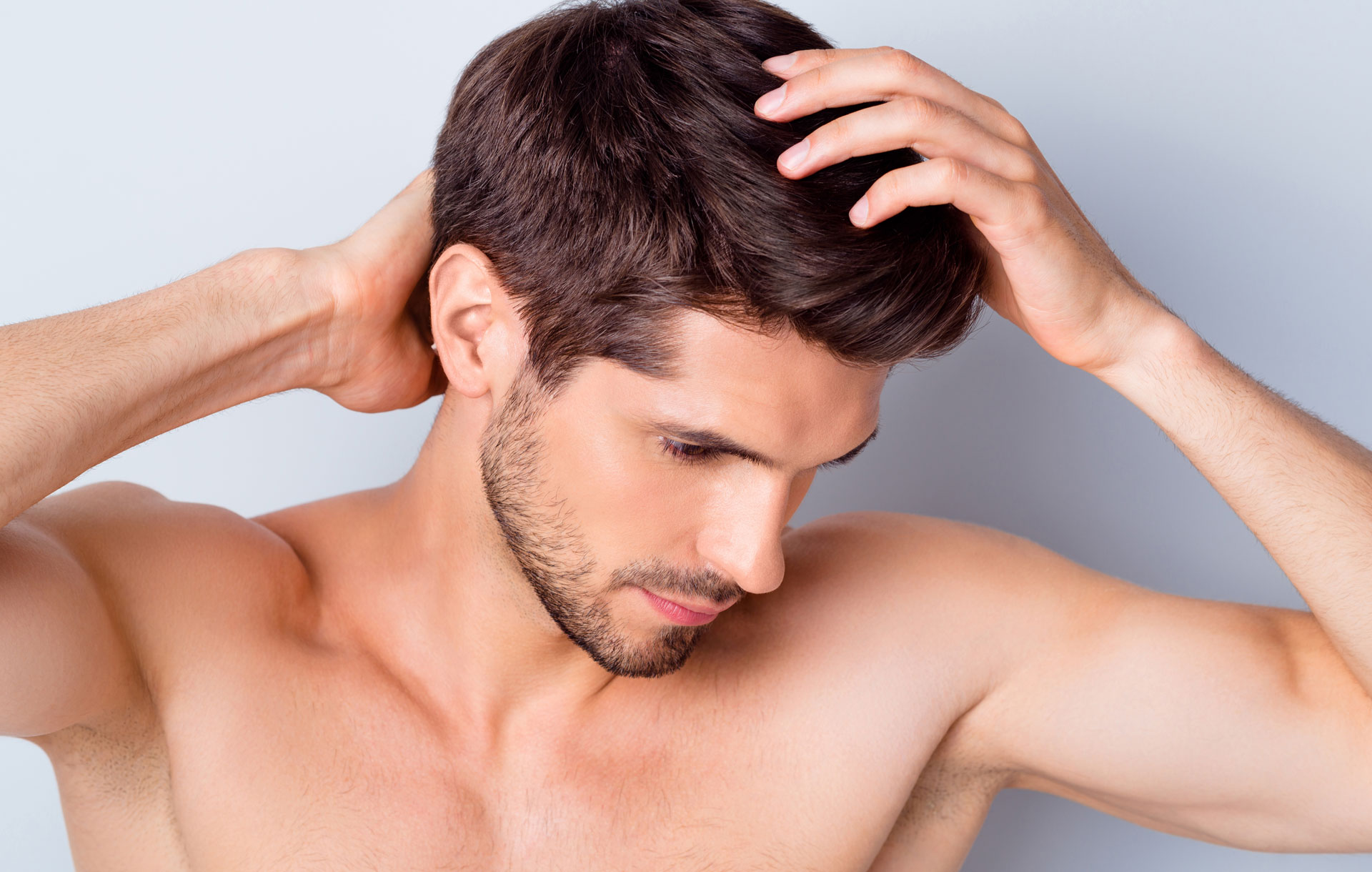A way to generate New Services, Referrals, and Income
Male pattern baldness, also known as androgenetic alopecia (AGA), accounts for 95% of hair loss in men. Research shows that by age 35, more than two-thirds of American men suffer from hair loss and by age 50, 85% of men deal with thinning hair. Androgenetic alopecia is a common hair loss condition that is characterized by the miniaturization of hair follicles in the frontal and parietal regions of the scalp. All this means is that there are approximately 35 million men in the United States dealing with hair loss.
While many men have embraced the “bald is beautiful” mantra, there are others who suffer from male pattern baldness and are extremely unhappy with how they look, particularly men who begin balding at a young age. Many are desperate for solutions and for some, it can impact interpersonal relationships as well as their professional options.
The bottom line is that the market for real hair restoration solutions is booming. Light therapy compliments currently existing treatments and procedures (prescription drugs, PRP, stem cells, transplant surgery) to enhance an individual’s outcome for maximizing hair growth. When it comes to restoring hair loss, there are many treatment options available including a drug called minoxidil (Rogaine®). There is also a pill called finasteride or its brand name for hair loss, Propecia. However, surgery is expensive and many are looking for a drug-free and pain-free option to avoid unwanted side effects.
[ihc-hide-content ihc_mb_type=”show” ihc_mb_who=”2,4,6,7,5″ ihc_mb_template=”3″ ]
What Causes Hair Loss
There are many different causes for hair loss including genetics, stress, poor nutrition, or as a side effect of taking a particular medication. Here’s a basic breakdown of what happens when hair loss becomes a problem. Basically, when hair loss happens, you do lose the hair but what you don’t lose is the actual follicle which is what helps keep the hair attached to the skin. Each hair follicle contains a hair bulb at its base which contains the papilla and the matrix and this is where your hair begins the growth process. Our hair is made up of a protein called keratin which makes up the hair shaft. When all of these pieces of the hair puzzle are not functioning optimally, proper hair growth just isn’t in an environment where it can thrive.
Science Supports Using LED Light Therapy
Low-level light therapy (LLLT) is a proven, effective, and safe treatment for hair loss, aging skin, and a variety of pain conditions. It enhances hair growth by targeting and boosting the biochemical processes in the scalp and follicle. It is thought that through photobiomodulation, red light energy emitted by low-level light therapy (LLLT) devices may encourage hair growth by accelerating keratinocyte and fibroblast mitosis, inhibiting nitric oxide, and reducing inflammation. (1-4)
Patients can experience light therapy in a clinical setting, as well as purchase a suitable LED device to complete treatment in the convenience of their own home without repeated office visits. It is also non-invasive, non-toxic, and painless.
In one review article, Efficacy of non-surgical treatments for androgenetic alopecia: a systematic review and network meta-analysis (© 2018 European Academy of Dermatology and Venereology), A.K. Gupta, et al, states that “Relative effects show LLLT as the superior treatment” when comparing light therapy to the six most common non-surgical treatment options for treating androgenetic alopecia in both men and women including dutasteride 0.5 mg, finasteride, 1 mg, minoxidil 2%, minoxidil 5% and platelet-rich plasma (PRP).
Growing Your Business
It’s well known that LED light therapy is a safe, proven, and effective treatment option for aging skin, acne, and general pain conditions. Now you can grow your spa menu by offering LED light therapy for hair restoration. Adding this to your menu of services can help bring in new male clients. It also adds an additional source of income as you may now offer in-practice hair treatments, or you can choose to rent or retail devices to your clients so they can continue treatments at home.
Red Light LED devices have been cleared by the FDA for the treatment of male and female pattern hair loss. It helps to proliferate hair follicle size and prevent catagen hair development (the end of the active growth of hair). Substantial research has supported light therapy’s ability to regrow hair lost due to androgenetic alopecia with minimal degrees of side effects and adverse events.
Light energy hair devices can be an effective stand-alone therapy or adjunctive therapy to medication and topical prescriptions for optimal hair regrowth. Dermatologists and medical practitioners specializing in hair restoration can ensure proper diagnosis and treatment recommendations. Individuals should consult with their physician for a correct diagnosis and to determine if light therapy is suitable for their category of hair loss.
[/ihc-hide-content]













